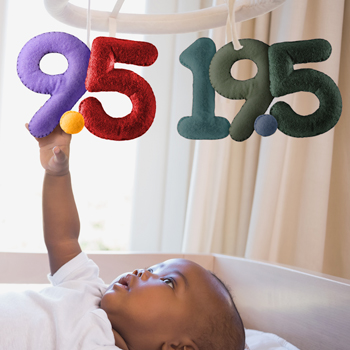
Five U.S. hospitals have now implemented international cerebral palsy diagnosis guidelines that have allowed them to reduce the average age at diagnosis from 19.5 months to 9.5 months. Most hospitals have an average age of about two years at diagnosis.
The Nationwide Children’s Hospital, based in Columbus, Ohio, was the first hospital to implement the guidelines clinically and trained teams at four other institutions to achieve the same results (UCLA Mattel Children’s Hospital, Los Angeles; the University of Texas Health Science Center, Houston; University of Utah Health, Salt Lake City; and Kennedy Krieger Institute, Baltimore).
Hospitals Improved the Process of Diagnosis
More than 50 percent of babies diagnosed with CP have spent time in a Neonatal Intensive Care Unit (NICU). By including early CP evaluation in the follow-up program for infants who have spent time in the NICU, a hospital can greatly increase the chances of early detection and diagnosis for this higher-risk group.
The early detection procedures combined neuroimaging and neurologic screenings with motor function assessments, biomarkers, and clinical histories. Throughout the process, teams analyzed key areas for improvement and continually improved the protocols. Their efforts allowed these hospitals to reduce the average age at CP diagnosis by 10 months.
How This Helps Children with CP
The earlier children are diagnosed, the sooner they can begin treatments and therapies that have been shown to improve quality of life in both the short and long terms. It allows families to better work with their doctors and specialists to create the most effective treatment plan and help children meet developmental milestones.
Earlier diagnosis also helps families who may want to seek monetary compensation for their child, as statute of limitations laws bar legal action after a certain age. The medical costs associated with CP can be astronomical, and can cause a significant financial burden on families. While the child typically has more time to file suit and seek certain categories of damages, parents often only have 1-4 years after birth to file and seek reimbursement for the money they’ve spent and compensation for costs related to their child’s medical care and therapies that will be incurred before the child turns 18. If the labor and delivery occurred at a public hospital, the deadline can be even shorter.
Access to Compensation for Families
Many cases of cerebral palsy are a result of a brain injury caused by medical error or negligent care before, during, or shortly after birth. This means that children with CP and their families have the right to be compensated for medical costs and for pain and suffering endured.
Filing suit is about more than money, it’s about what it can do to improve the lives of those living with CP. Individuals with a special needs trust, as a result of a settlement or successful verdict, have the means to seek out the therapy, medical equipment, and care they need to reach their full potential and can often dramatically improve their quality of life.
If you believe that your child’s CP may have been caused by medical error or negligence, the dedicated team at Cerebral Palsy Family Lawyers can help you find answers and fight for the compensation you and your child deserve.
Sources
ScienMag. “How A Network Of Hospitals Reduced Average Age At Cerebral Palsy Diagnosis To 9.5 Months”, https://scienmag.com/how-a-network-of-hospitals-reduced-average-age-at-cerebral-palsy-diagnosis-to-9-5-months/. May 27,2020.
